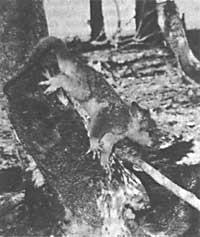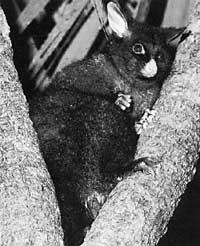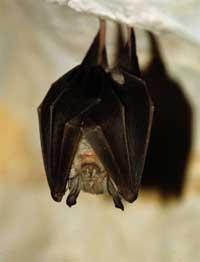Living fast, killing early: the evolutionary theory of aging
2000/02/01 ARMIGO-PREWITT, T. | FURLOW, B. Iturria: Elhuyar aldizkaria
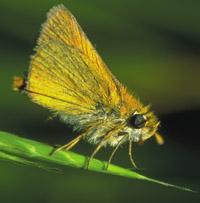
Both animals are almost inseparable. They have similar behavior and a social life that they like to feed on spiders and trees. But the life length of the Petaurus tsarguides is twice that of Gymnobelideus. Why?
It seems that the phrase titled, that is, living soon, is the general rule of aging. The secret of youth can be in the physiology of Petaurus, which burns calories more slowly than Gymnobelideus. At least the opposite is true. Steven Austad Petaurus of the University of Idaho believes he can explain the longevity of his life, as Austad tries to demonstrate evolutionary theories of aging. In his opinion, the key is in the superficial part that the Petaurus has between the front and rear legs, that is, in the membrane that it uses to plan from the tree to the tree.
The origin of youth
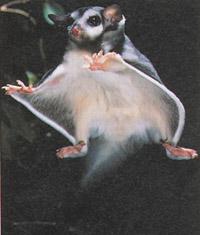
Austad and many other researchers who like him believe in evolutionary theories, and are increasingly, are changing traditional ideas about aging: aging is not only a process inherent in cells that deteriorate over time and use. Evolutionary researchers study ecological and evolutionary processes, seeking the reason for survival from one species to another. Their thinking is based on the idea that living beings can suffer the damages produced by time: living beings can develop mechanisms to reduce the amount of those cellular damages that lead to death, but yes, they must first develop survival strategies to prevent accidental death.
The German physiologist Max Rubner carried out at the beginning of the century the first studies that linked the metabolic rate of animals, that is, the speed with which animals burn calories, with survival. Based on the metabolic rate and survival of animals, he calculated the number of calories burned throughout life by cows, horses, dogs and guinea pigs. He then divided the value obtained by the weight of each animal (which used the average weight of an adult specimen) and calculated the number of calories burned per unit of mass for each species and life. The values obtained vary very little from species to species. Austad updates the calculations and finds that the mite burns 260 calories per life and 280 per gram and horses, quite similar values.
Nature seems to have attributed the ability to burn a certain amount of energy to each gram of animal, either a horse or an animal. The faster you burn, the sooner you die. According to Austad, "if the animals were cars, we would say that everyone has started with the same amount of gasoline. If they quickly burn gasoline, like rats, they will die early, while if they slowly burn gasoline they can live as much as turtles." Many biogerontologists agree on this theory, as it explains why the life of small animals is or is usually shorter: small animals have more area per unit of volume than large animals, and in order to conserve body temperature they need to burn energy faster.
You should also keep in mind that burning energy can damage your cells.
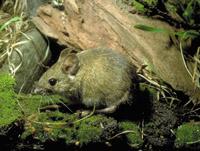
"In short, metabolism is just a cold and controlled fire," says Austad, "and all fires, although controlled, can be harmful." Instead of producing soot and flame, cellular fires generate metabolic residues, some of which are destructive: free radicals, for example, constantly attack both DNA and other molecules; and substances generated by the cell itself in metabolic processes can kill several cells. The faster the waste accumulates, the sooner the cell will deteriorate and the sooner it will begin to descend on slope until death. The rate of accumulation of waste is limited by the speed of combustion of the energy used to feed the chemical reactions that occur in cells, essential for survival. Or that's what the theory says at least.
In fact, closing the fruit flies in a room and decreasing the temperature of the same will cause a decrease in the metabolic rate of flies and an increase in survival. In the case of mammals and other warm-blooded animals, this is not true, as they can increase the metabolism in a cold environment and keep the body temperature constant.
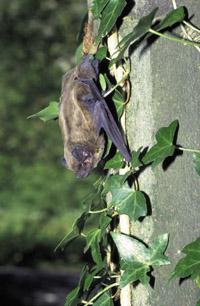
When it was discovered that the reduction of the diet of rats greatly increased their survival, the researchers concluded that the shortage of food had some relation to the decrease in metabolic rate. However, in 1985, a group of researchers at the University of Texas observed that the relationship between lack of food or calories and increased survival was not a decrease in metabolic rate. Although initially the metabolic rate decreases, the metabolism of hungry rats returns to its normal state. According to Austad, animals forced to live with low calories are able to burn energy more favorably. If these animals are aged and die later, it is because they use energy for the maintenance and repair of the body itself that to make offspring with few possibilities of life; of course, intentional evolution.
Unexpected death
But longevity cannot be explained simply by metabolic rates, and proof of this are many animals not common in biologist laboratories. Birds, for example, have higher metabolic rates than mammals of similar size, but their lives are double. Marsupials, despite having lower metabolic rates, have a shorter life than mammals with lime of the same size. And we cannot forget the two tsarists mentioned at the beginning of the article. But Austad and other researchers have picked up the challenge and found a way to explain these "irregularities" also through ecology and evolution.
The explanation was first given 50 years ago by Nobel laureate Peter Medawar. Better designed organisms can die by accident or be hunted by someone, and Medawar suggested that the speed of aging of animals also depends on that "external mortality." "Why use energy in developing systems that protect your cells from old age?" says Austad. "Obviously, choice is not intended, but if external mortality is high, natural selection will encourage the genes of individuals who are good at reproducing, who burn and produce young energies.
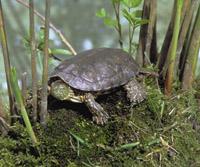
In other words, the differences between the mechanisms of cell formation also condition the survival of the species, since the accumulation of cellular damage is not a mere consequence of the accumulation of cellular damage, either in the long term or not. According to Austad “although some life processes are harmful in themselves, natural selection can design defense mechanisms to fight these damages, always under ecological conditions. This happens, for example, when a species develops the way to escape its predators, such as shells and fingers. Reducing the risk of external mortality, natural selection can delay cell aging and develop mechanisms that support the reproductive life of the animal.
According to Austad, if small mammals mature and age faster not only because they burn energy quickly, but because their chances of dying in the clutches of predators make natural selection provide them with very little energy to build bodies that resist the damage of time. Larger animals, however, must avoid fewer predators and are able to better withstand other environmental hazards, such as extreme temperatures or times of scarcity.
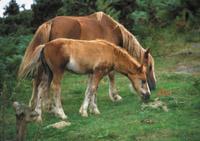
If environmental risks affect the speed of aging, it is possible and is that the life of flying mammals is greater than that of terrestrial mammals of the same size, as observed in the study conducted by Austad in 1991. Bats have longer lives than other mammals of the same size: bats the size of mice can live 30 years, that is, six times more than mice; and that is not only a characteristic of bats that hibernate; tropical bats that remain awake throughout the year also have more longevity. "Thanks to their ability to fly, bats have fewer environmental risks," says Austad, "and they can escape more easily from predators or food shortages."
They also studied other mammals capable of flying, or rather planning, and realized that their life was longer. The lifespan of American flying squirrels, for example, is twice the most common squirrel. This feature was baptized as "flying, dying late."
Shells and claws
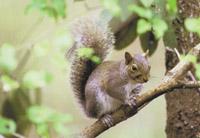
After 10 years of theory, Austad is able to unravel an endless list of examples: the Icelandic clams with very thick shells that inhabit the seabed live more than 200 years, so they have the honor of being the longest being. However, conventional shavings are also long-lasting – average 14 years – compared to shelle-free mollusks. The latter do not reach 5 years of life.
In the case of mammals with thorns the same phenomenon is repeated. Equids, animals similar to hedgehogs, live 50 years and spiny, despite being the longest rodents, live only 20. All mammals with thorns have extraordinary long lives.
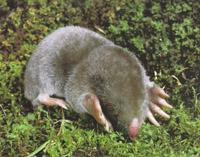
"Longevity and low unexpected risk of death if they are cause-effect characteristics," explains Austad, "any animal can be exploited. Moreover, the theory is applicable not only to the different species, but also to the different populations of the same species." The isolated animal population without predators can begin to age more slowly than a predator-dependent population. In fact, this is the case of the Virginia Tsarists. The life of the Tsarists of Sapelo Irla, who have lived almost 4,000 years without prey, is usually 50% longer than that of those who inhabit the continent, who rarely celebrate their third anniversary. Moreover, the Tsarigueas of the islands remain for longer and the young and the females also have a second breeding. The continental females are sterilized after the first breeding. Austad also analyzed the speed of obsolescence of the ligament tissues of the trellis, a measure widely used to follow the aging process, and observed that in the tsargines of the continent that speed was double.
But with what mechanism do the Zarignias of the islands age more slowly? Researchers have recently joined the study of cellular mechanisms that house young animals. The enzyme superoxide dismutase is one of the chemicals involved in these mechanisms: it is an antioxidant enzyme that destroys free radicals. And for any type of metabolic rate, researchers have observed that species with longer lives have higher amounts of this enzyme.
In this sense, a group of researchers from the University of Manchester have discovered this year that long-life animal cells are more resistant to chemical attacks. From rodents to humans, fibroblast cells of different species have been investigated, which have been chemically attacked to measure the survival of cells in the face of this type of attack. And always for a certain metabolic rate, they observed that long-lived animal cells were more sustainable.
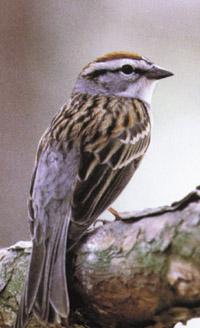
Birds have developed a new defense mechanism to delay aging. Although their metabolism is too fast for their size, birds produce less free radicals than mammals. However, it is not yet known how exactly this mechanism works. In theory, another way to support old age is to produce more enzymes that are used to repair DNA. These enzymes locate and replace damaged DNA fragments and, although substitutions are random and defective, it is always better than damaged DNA.
And what does the evolutionary theory of human beings say? The hypothesis is that our ancestors developed the ability to speak in order to share survival strategies. And perhaps thanks to this ability to speak, we have a life four times longer than the size and metabolic rate we have. And without claws. Without a doubt, modern medicine has considerably increased the life expectancy of human beings and has considerably decreased the level of mortality of children, but it seems that those who come to live the century owe their gratitude to the evolutionary heritage that to medicine.

Gai honi buruzko eduki gehiago
Elhuyarrek garatutako teknologia




